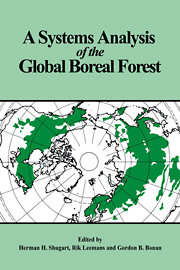1 - Introduction
Published online by Cambridge University Press: 12 January 2010
Summary
This is an era of increased interest in the function and interaction of the major geophysical, geochemical and ecological systems of the earth. The interest in these large spatial scale studies has had diverse origins: the success of the ‘International Geophysical Year’ of global observations (1957–8) and a shared comprehension of just how much time has passed since this effort; the characterization of the surface of the earth from an ever increasing availability of images from space; the realization that humans are altering the composition of the atmosphere; a relative warming in international political tensions and the increased likelihood of sustained international scientific exchanges; an improved understanding of the past dynamics of the earth's surface resulting from radioisotope dating and analysis of paleoecological data; and the ramifications of computers with the power to solve complex equations of the fluid motion of the atmosphere and oceans. The conjunction of these and many other developments have turned the interests of many scientists in different disciplines to the issue of increasing the level of understanding of the earth as an interacting, dynamical system.
However, for all of these exciting developments, scientists in one of the important disciplines contributing to the study of the working of the planet, ecological sciences, are focused largely on the understanding of biota – environment interactions at very short time and space scales. Kareiva & Andersen (1988) found that about 80% of the studies in a sample of the journal Ecology were developed on areas less than 100 m2 Weatherhead (1986) sampled studies in the three areas of ecology, evolutionary biology and behavior and found the average duration of study to equal 2.5 years.
- Type
- Chapter
- Information
- A Systems Analysis of the Global Boreal Forest , pp. 1 - 8Publisher: Cambridge University PressPrint publication year: 1992
- 1
- Cited by

